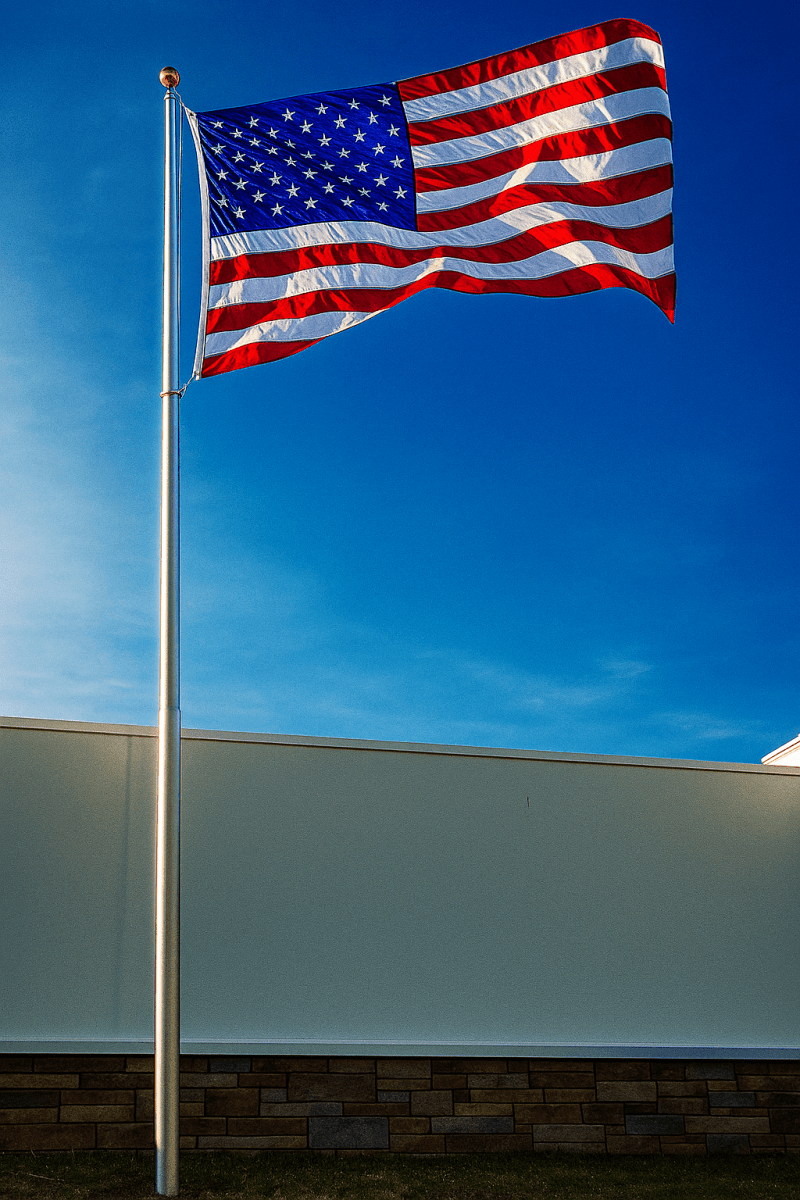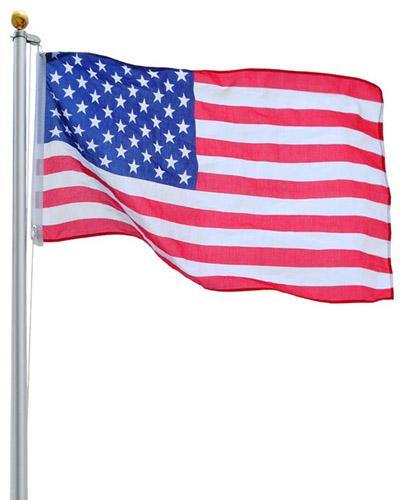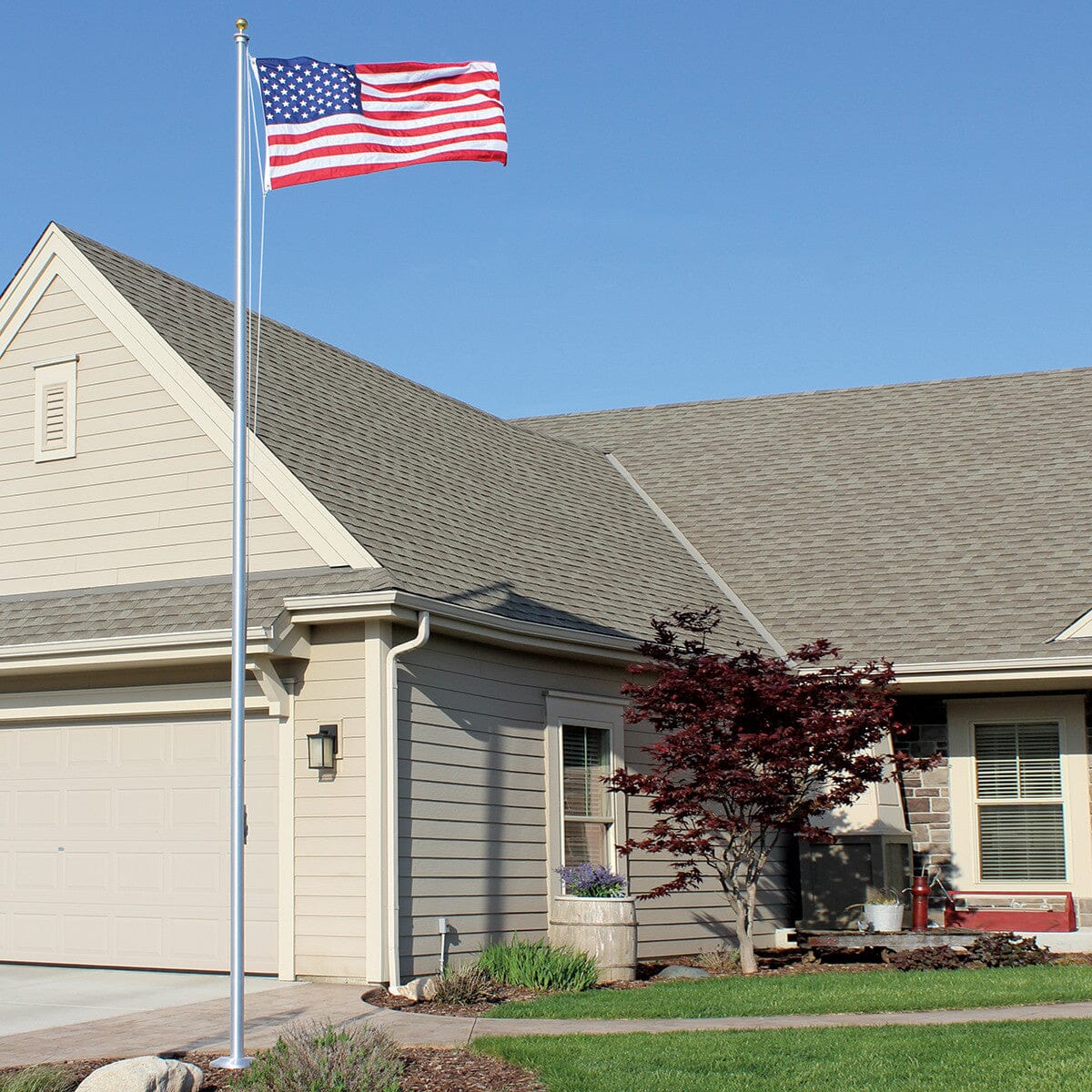Displaying a flag is a wonderful way to show your pride, but getting the look just right involves more than quickly picking a pole and a flag. The relationship between the flag's size and the pole's height is what creates a balanced and visually appealing display.
A flag that’s too big can overwhelm a short pole, while a small flag can get lost on a tall one.
Find out how to choose the right flag size for your pole so your display looks polished and professional. Today, we’ll cover standard dimensions, how to match them to your pole, and other factors to consider.
That way, you'll have all the information you need to create a flag display that stands out for all the right reasons.
Understanding Flag Size Dimensions
When you shop for a flag, you’ll notice they come in standard sizes, usually expressed in feet. These dimensions represent the flag's height (hoist) and width (fly).
The most common size you'll see is the 3x5-foot flag.
This is a versatile option that works well in many residential settings. For larger properties or commercial buildings, you might see bigger sizes like 4x6 feet or 5x8 feet.
These larger flags make a bigger statement and are more visible from a distance.
For example, a 3x5-foot flag is perfect for a home with a 20-foot flagpole. If you have a taller, 25-foot pole, stepping up to a 4x6-foot flag would look more proportional.
The idea is to create a display that feels balanced and intentional.
Matching Flag Size to Pole Height
The general guideline is that the flag's length (the longer side) should be about one-quarter to one-third of the flagpole's height. This ratio ensures the flag looks proportionate and flies gracefully without touching the ground or looking too small.
A flag that’s too large for its pole can put excessive strain on the hardware, especially in windy conditions.
Conversely, a flag that's too small might not have the visual impact you're hoping for. Sticking to the recommended ratio helps avoid these issues.

Factors Affecting Flag Size Selection
While the pole-to-flag ratio is a solid guideline, a few other factors can influence your decision. Thinking about these details will help you make the best choice for your specific situation.
Wind Conditions
If you live in a particularly windy area, you might consider choosing a slightly smaller flag than recommended.
A large flag acts like a sail, catching a lot of wind. This can cause it to wear out faster and put extra stress on your flagpole and its components.
A smaller, more durable flag might be a better option for high-wind locations.
Surrounding Environment
Take a look at where your flagpole currently stands.
Is it in a wide-open space or next to a large building? A flag displayed against a big building might need to be larger to avoid being visually overwhelmed.
In a residential neighborhood with smaller homes, a standard 3x5 or 4x6-foot flag will likely fit in perfectly without overpowering its surroundings.
Local Regulations
Some communities, especially those with a Homeowners' Association (HOA), have rules about flagpole height and flag size. Before you install your flagpole or buy a new flag, it's a good idea to check for any local ordinances or HOA guidelines.
This can save you from potential headaches down the road.
Don’t worry; an HOA can’t deny you the ability to fly a flag at home. However, they can have limitations on factors, primarily the size of the flag display, that affect your design choices.
A Step-by-Step Guide to Measuring Your Flagpole
If you don't know your flagpole's height, measuring it is straightforward. An accurate measurement is the first step to choosing the right flag.
For a ground-mounted pole, the easiest method is to use a measuring tape.
If the pole is too tall to measure directly, you can try a shadow method on a sunny day. Measure the length of the pole’s shadow on the ground.
Then, measure the shadow of an object of a known height (like yourself). With a little bit of math, you can calculate the pole's height.
For a pole mounted on a building, measure from the base of the pole to its top.
Be careful when using a ladder. Having someone to help you hold the tape measure can make the process safer and more accurate.
Common Mistakes to Avoid
Choosing the wrong flag size is a frequent misstep, but it's an easy one to avoid. Knowing what to watch out for can help you get your display right the first time.
One of the most common errors is flying a flag that's too large for the pole.
This not only looks awkward but can also damage the flagpole. The weight and wind resistance of an oversized flag can strain the halyard (the rope) and other hardware.
Another mistake is not considering the environment.
A flag that looks great in a store might be too big or small once you get it home. Always think about the scale of your property and the surrounding area.
If you do make a mistake, the fix is usually as simple as swapping the flag for a more appropriate size.

Observing Real-Life Examples for Success
Seeing well-proportioned flag displays can help illustrate the principles we’ve discussed.
A 20-foot pole with a 3x5-foot flag in a front yard creates a classic, welcoming look. The flag is large enough to be clearly visible from the street but doesn't dominate the house.
In a commercial setting, you might see a 40-foot pole outside an office building flying a 6x10-foot flag.
This larger scale is fitting for the building's size and creates a powerful, professional impression. These examples show how to choose the right flag size for your pole to achieve a specific aesthetic.
The positive impact is a display that looks deliberate and respectful.
Your Perfect Flag Display Awaits
Choosing the right flag size is about creating balance and proportion.
By following the guideline that the flag's length should be about a quarter of the pole's height, you can ensure your display looks just right. Remember to also consider factors like wind, your surroundings, and any local rules.
Start browsing the nylon flags available in a wide range of sizes so you can establish the perfect display.
With the right information, you can confidently select a flag that complements your pole and enhances your property. The result will be a striking and respectful display you can be proud of for years to come.







